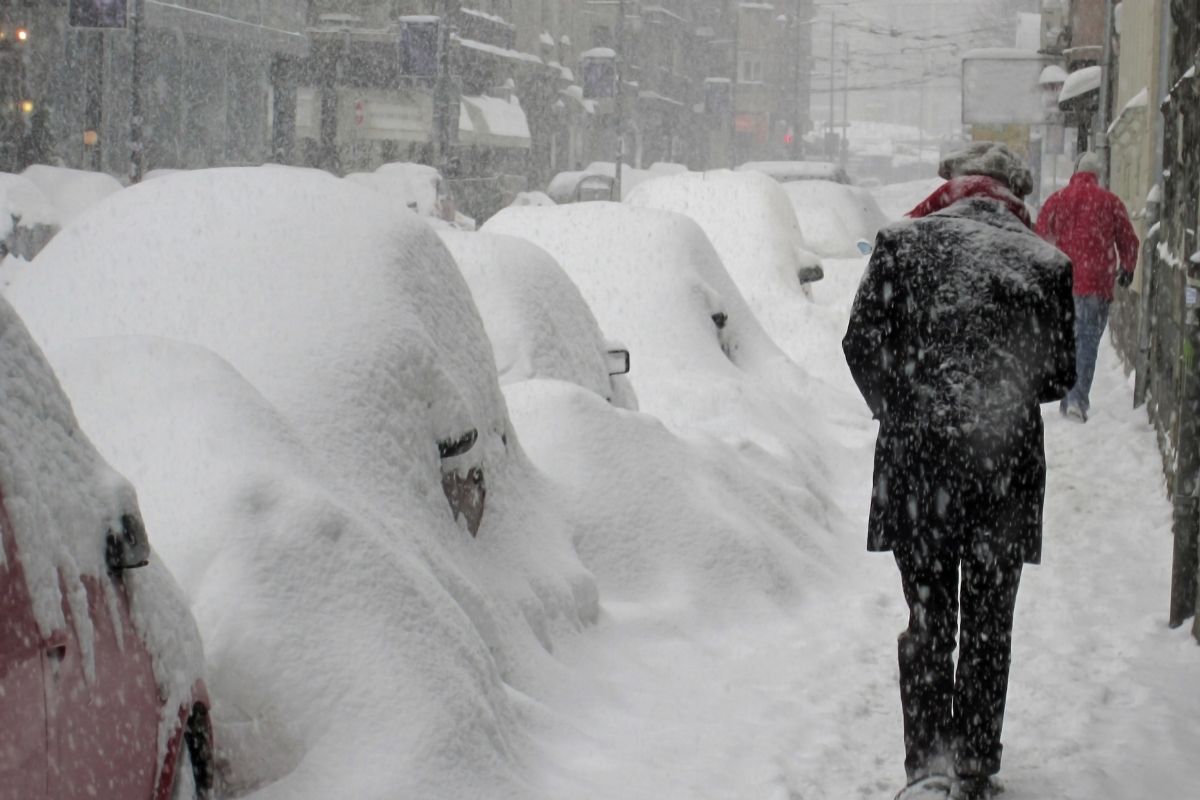

Īhead of the storm, residents prepared in advance for the major nor'easter, with blizzard warnings issued for several states, including New York, Pennsylvania, New Jersey, Connecticut, Rhode Island, and Massachusetts. The storm was given various unofficial names, such as Winter Storm Stella, Blizzard Eugene, and Blizzard of 2017. It later coalesced into a powerful nor'easter off the East Coast, producing a swath of heavy snowfall across a large portion of the Northeast. Forming out of an extratropical cyclone near the Northwest, the storm system dived into the northern portions of the United States, dropping light to moderate snow across the Great Lakes, Upper Midwest on March 11–12 before reaching the Ohio Valley the next day. The March 2017 North American blizzard was a major late-season blizzard that affected the Northeastern United States, New England and Canada, dumping up to 3 feet (36 in 91 cm) of snow in the hardest hit areas, mainly New York, Vermont, New Hampshire and Southern Quebec. Model guidance suggests that warmer than average temperatures are likely through mid-February in the Northeast US with very little support for winter weather.Part of the 2016–17 North American winterġ Most severe tornado damage see Enhanced Fujita scaleĢ Time from first tornado to last tornado If no measurable snow occurs in the city on February 1, it’s likely that the snowless winter will persist for at least another week. The intense cold will be gone in a blink of an eye, with temperatures warming above average again by the early part of next week. This will bring a brief but intense shot of cold to New York metropolitan area from Friday into Saturday, with temperatures falling into the teens and real-feel temperatures as low as the single digits. While it appears unlikely that measurable snowfall will occur from this system, any snowflakes falling from the sky are worth monitoring closely.īehind this disturbance will come dry and cold air associated with a piece of the tropospheric polar vortex. This disturbance will be weak and passing through quickly, but it’s not impossible that NYC sees some light snow. The one exception will be on Wednesday morning, February 1, when model data suggests a period of light snow could occur with a passing frontal boundary. The weather pattern over the next several weeks is expected to remain unfavorable for snow. Those important high-pressure systems have simply not been there so far this winter, which has led to bouts of cold that move away just in time for storms to reach our area.

Members and sponsors make THE CITY possible. These areas of high pressure allow moisture to move into the five boroughs while keeping the cold in place to ensure that precipitation falls as snow. Historically, New York City’s snowstorms are dominated by cold air, which is locked in by a strong high pressure to our north. Fleeting cold air masses do no good in terms of winter storm potential. The thing with cold is that it needs to be committed to result in snow. This instance was no different, with the Pacific jet leading to historic rainfall in California and bouts of record-breaking warmth in the Eastern United States over the past few weeks. When the jetstream in the Pacific Ocean strengthens and extends, it typically brings mild air and lots of moisture with it. Since then, the pattern has been dominated by a strong Pacific jet. The weather pattern around that cold air mass didn’t cooperate to produce a storm system, and as a result we left that air mass without any snow to show for it. In December, the city observed several days of impressive cold as temperatures plummeted 20 degrees below normal. Instead, there are plenty of reasons to go around. Still, there’s no specific weather phenomena that can be identified as the root cause. This year, the city continues to cruise toward February with a brown landscape and a seemingly endless parade of rainfall events.įrom a meteorological perspective, the snowless drought grows more impressive by the day. That year was the least snowy winter in city history, with just 2.8” of total accumulation. The last time it took so long for snow to arrive was more than 50 years ago on January 29th, 1973. The snowless drought has stretched on for the longest period since record keeping began. In fact, KNYC - as the National Weather Service refers to Central Park weather observation station - has reported zero measurable snowfall since March 9th, 2022. Snow has been almost completely absent in New York City since winter began almost a month ago. Our boots, shovels and snowblowers have seen a different kind of accumulation on them so far this winter - dust.


 0 kommentar(er)
0 kommentar(er)
